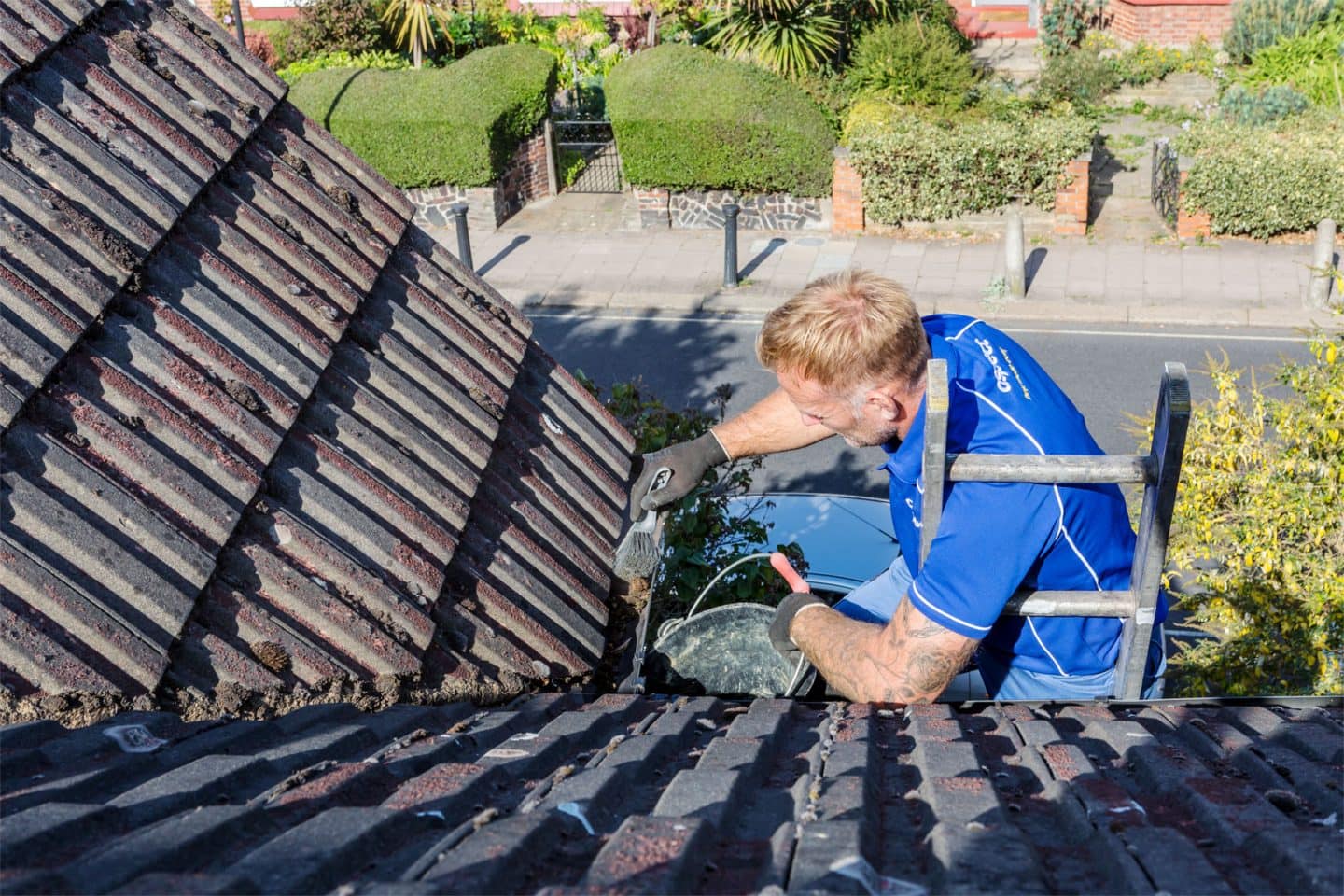

Articles
How To Clean Mold Off Gutters
Modified: October 28, 2024
Discover effective ways to clean mold off gutters with these informative articles. Protect the integrity of your home and ensure proper maintenance.
(Many of the links in this article redirect to a specific reviewed product. Your purchase of these products through affiliate links helps to generate commission for Storables.com, at no extra cost. Learn more)
Introduction
Mold growth on gutters is a common problem faced by homeowners. Not only does it look unsightly, but it can also pose serious health risks if left untreated. Mold thrives in damp and dark environments, making gutters an ideal breeding ground. If you’ve noticed black or green patches on your gutters, it’s important to take action to clean and prevent further mold growth.
In this article, we will guide you on how to clean mold off gutters effectively. We’ll also share some tips on preventing future mold growth, ensuring that your gutters stay clean and mold-free.
Before we dive into the cleaning process, it’s crucial to understand why mold grows on gutters in the first place. Gutters collect rainwater and transport it away from your home, preventing water damage to the foundation and walls. However, if your gutters are clogged or damaged, water can accumulate and create a damp environment. This moisture, combined with organic debris like leaves, twigs, and dirt, provides the perfect conditions for mold to thrive.
Now that we know the underlying cause of mold growth on gutters, let’s discuss some safety precautions you should take before embarking on the cleaning process.
Key Takeaways:
- Regular gutter maintenance, proper cleaning techniques, and preventive measures are essential for effectively removing mold from gutters and minimizing the risk of future mold growth. Stay proactive to protect your home and maintain a healthy living environment.
- Safety precautions, thorough assessment of mold severity, and diligent cleaning efforts are crucial in ensuring the successful removal of mold from gutters. By following the outlined steps and additional tips, you can achieve clean, mold-free gutters and safeguard your home from potential water damage and health hazards.
Read more: How To Clean Mold Off Siding
Understanding the Problem: Why Mold Grows on Gutters
Mold growth on gutters is a result of several factors, primarily the presence of moisture and organic debris. When gutters become clogged with leaves, twigs, and other debris, they trap water and prevent it from flowing freely. This stagnant water becomes a breeding ground for mold spores.
Additionally, gutters that are not properly maintained or have cracks and leaks can allow water to seep into the walls and foundation of your home. This not only weakens the structure but also creates a damp environment that encourages mold growth.
Mold thrives in environments where there is moisture, darkness, and organic material to feed on. Gutters provide the perfect conditions for mold to flourish, as they collect rainwater and organic debris. The combination of water and decaying leaves or other organic matter creates an ideal habitat for mold spores to multiply.
Common types of mold that grow on gutters include black mold (Stachybotrys chartarum) and green mold (Aspergillus). These molds not only give your gutters an unsightly appearance but can also release spores that can enter your home through windows, vents, or doors. Exposure to mold spores can trigger allergic reactions, respiratory problems, and other health issues, making it essential to address the problem promptly.
Now that we understand why mold grows on gutters, let’s move on to the safety precautions you should take before cleaning your gutters.
Safety Precautions Before Cleaning Gutters
Prior to cleaning your gutters and removing mold, it’s important to take certain safety precautions to protect yourself from potential hazards. Here are some important safety measures to keep in mind:
- Wear proper protective gear: When working with gutters, it’s crucial to wear protective gloves, goggles, and a face mask to shield yourself from mold spores, debris, and any chemical cleaning solutions you might use.
- Use a sturdy ladder: Ensure that you have a stable and secure ladder to access and work on your gutters. Make sure the ladder is positioned on stable ground and that it’s the correct height for the task.
- Have a spotter: If possible, have someone present to hold and stabilize the ladder while you work on the gutters. This provides an extra layer of safety and support.
- Check for electrical hazards: Before beginning any cleaning work, be aware of any nearby power lines or electrical hazards. Make sure to keep all tools and yourself a safe distance away from any electrical sources.
- Ensure a clear workspace: Clear the area around your gutters of any obstacles to provide a safe and unobstructed workspace. Remove any loose debris or objects that could cause you to trip or slip.
- Be cautious of slippery surfaces: Gutters can become slippery when wet or covered in mold. Take extra caution when climbing or walking on the ladder to avoid any accidents.
- Avoid overreaching: It’s important to maintain a stable position on the ladder and avoid leaning too far to reach areas of the gutter. This can result in losing balance and falling.
- Follow manufacturer’s instructions: If you are using any cleaning solutions or tools, be sure to read and follow the instructions provided by the manufacturer to ensure safe and effective use.
By taking these safety precautions, you can minimize the risk of accidents or injuries while cleaning your gutters. Now that you are aware of the safety measures, let’s move on to the tools and materials you’ll need for the cleaning process.
Tools and Materials Needed
Before you begin cleaning your gutters and removing mold, gather the following tools and materials to ensure a smooth and efficient process:
- Gloves: Invest in a sturdy pair of rubber or latex gloves to protect your hands from debris and potential allergens.
- Goggles: Wear protective goggles to shield your eyes from any debris or cleaning solutions that may splash up.
- Face mask: A face mask will help filter out mold spores and dust, preventing them from being inhaled.
- Ladder: Have a sturdy ladder that is appropriate for the height of your gutters. Make sure it’s stable and secure to avoid accidents.
- Bucket or bag: Use a bucket or bag to collect the debris you remove from the gutters.
- Gutter scoop or trowel: These tools will help you remove leaves, twigs, and other debris from the gutters.
- Scrub brush: An old scrub brush or a brush specifically designed for cleaning gutters will come in handy for scrubbing away mold.
- Pressure washer or hose: Depending on the severity of the mold, you can use a pressure washer or a regular garden hose to rinse the gutters.
- Cleaning solution: You can use a commercially available mold cleaner or create your own solution using a mixture of water, bleach, and dish soap. Dilute the bleach to avoid damaging the gutters.
- Safety glasses: Wear safety glasses if you are using a pressure washer to protect your eyes from any debris.
Make sure to gather all these tools and materials before starting the cleaning process. It’s essential to have everything readily available to ensure a safe and efficient operation. Once you have everything prepared, you can move on to assessing the mold growth on your gutters.
Step 1: Assessing the Mold Growth
Before you begin cleaning the mold off your gutters, it’s important to assess the extent of the mold growth. This will help you determine the appropriate cleaning method and level of effort required. Here are the steps to assess the mold growth:
- Inspect the gutters: Take a close look at your gutters to identify areas where mold is present. Check for black or green patches, slimy residue, or any other signs of mold growth.
- Determine the severity: Assess the severity of the mold growth. If the mold is limited to a small area and is not widespread, it may be easier to clean. However, if the mold covers a large portion of the gutters and is deeply embedded, you may need to take more extensive measures.
- Check for underlying issues: Look for any underlying issues that may be contributing to the mold growth, such as clogged downspouts, damaged gutters, or improper drainage. These issues should be addressed along with the mold removal process.
- Consider professional help: If the mold growth is severe, extensive, or you are uncertain about how to tackle it, it may be advisable to seek professional help. They have the expertise and specialized equipment to safely and effectively remove mold from gutters.
By thoroughly assessing the mold growth, you can better plan and execute the cleaning process. Once you have determined the severity and extent of the mold, you can proceed to the next step, which is preparing the cleaning solution.
Read more: How To Clean Mold Off Blinds
Step 2: Preparing the Cleaning Solution
Now that you have assessed the mold growth on your gutters, it’s time to prepare a cleaning solution that will effectively remove the mold. There are several options for cleaning solutions, depending on your preference and the severity of the mold. Here’s how to prepare a basic cleaning solution:
- Option 1: Commercial Mold Cleaner: If you prefer a ready-to-use solution, you can purchase a commercial mold cleaner from your local hardware store. Follow the instructions provided on the product for proper use and dilution.
- Option 2: DIY Solution: If you prefer a DIY approach, you can create your own cleaning solution using household ingredients. Mix equal parts of water and bleach in a bucket and add a small amount of dish soap. Be sure to wear gloves and work in a well-ventilated area when using bleach. Diluting the bleach will help prevent damage to your gutters.
Once you have chosen your preferred cleaning solution, thoroughly mix the ingredients in a bucket until well combined. Be cautious when handling bleach and follow all safety measures mentioned on the product label.
It’s important to note that bleach can potentially cause discoloration or damage to certain surfaces. Before applying the cleaning solution to your gutters, test a small, inconspicuous area to ensure compatibility.
With the cleaning solution prepared, you’re now ready to move on to the next step: applying the solution to the mold-infested gutters.
Step 3: Applying the Cleaning Solution
Now that you have your cleaning solution ready, it’s time to apply it to the mold-infested gutters. Follow these steps to effectively apply the cleaning solution:
- Put on protective gear: Before you begin, make sure to put on your gloves, goggles, and a face mask to protect yourself from any potential hazards.
- Work in sections: Divide your gutter system into manageable sections. This will help ensure that you cover all areas and allow enough time for the cleaning solution to work.
- Dip the brush or scrubber: Dip your scrub brush or scrubber into the cleaning solution, making sure it is thoroughly saturated with the solution.
- Apply the solution: Starting at one end of the gutter section, apply the cleaning solution to the mold-infested areas. Scrub gently but thoroughly, focusing on the areas with the most mold growth.
- Let the solution sit: After applying the cleaning solution, allow it to sit on the moldy areas for a few minutes. This will give the solution time to break down the mold and make it easier to remove.
- Reapply if necessary: For stubborn mold growth, you may need to reapply the cleaning solution and let it sit for a bit longer. Be patient and ensure that the solution fully penetrates the mold.
As you work through each section of the gutters, periodically dip your brush or scrubber back into the cleaning solution to ensure it remains saturated. This will help maintain the effectiveness of the solution and make the cleaning process more efficient.
Once you have applied the cleaning solution to all mold-affected areas, it’s time to move on to the next step: scrubbing the mold off the gutters.
Use a mixture of 1 part bleach to 10 parts water and a scrub brush to clean mold off gutters. Wear gloves and eye protection when working with bleach.
Step 4: Scrubbing the Mold Off
After allowing the cleaning solution to sit on the mold-infested gutter areas for a few minutes, it’s time to scrub the mold off. Follow these steps to effectively remove the mold:
- Use a scrub brush: Take your scrub brush or scrubber and begin scrubbing the moldy areas of the gutters. Apply gentle pressure and use a back-and-forth or circular motion to dislodge the mold.
- Focus on problem areas: Pay close attention to areas where the mold is more stubborn or deeply embedded. Spend extra time and effort to ensure thorough removal.
- Rinse the brush frequently: As you scrub, rinse the brush or scrubber frequently to remove any loosened mold and prevent recontamination.
- Work in sections: Continue to work in sections, moving along the gutter system until you have scrubbed all mold-infested areas.
- Inspect for remaining mold: Once you have scrubbed the gutters, inspect the surfaces for any remaining mold. If you notice areas that still have mold, repeat the cleaning and scrubbing process until all mold is removed.
While scrubbing, it’s important to maintain a steady grip on the ladder and ensure your safety. Take breaks as needed to avoid overexertion and maintain a comfortable working pace.
Once you are satisfied that the mold has been effectively scrubbed off, it’s time to move on to the next step: rinsing the gutters.
Step 5: Rinsing the Gutters
Now that you have successfully scrubbed off the mold from your gutters, it’s important to thoroughly rinse them to remove any remaining cleaning solution, debris, and mold residue. Follow these steps to effectively rinse your gutters:
- Prepare your hose or pressure washer: If you have a pressure washer, set it to a low pressure setting. If you’re using a hose, attach a nozzle with a strong water flow.
- Start at one end: Begin rinsing the gutters at one end, working your way towards the other end. Make sure to direct the water flow towards the downspout to ensure proper drainage.
- Flush out debris: As you rinse the gutters, pay close attention to flushing out any remaining debris that may have loosened during the scrubbing process. This will help ensure clear and unobstructed gutters.
- Continue along the entire gutter system: Move along the gutter system, section by section, until you have rinsed all areas thoroughly.
- Inspect for any remaining mold: Once you have rinsed the gutters, inspect the surfaces for any remaining mold or residue. If you notice any lingering mold, you may need to repeat the scrubbing and rinsing process.
While rinsing, be mindful of your safety and the surroundings. Avoid spraying water directly onto electrical outlets or fixtures and ensure that the water flow is directed away from your home’s foundation.
Once you are satisfied that the gutters are clean and free from mold, it’s time to move on to the next step: preventing future mold growth.
Read more: How To Clean Mold Off Curtains
Step 6: Repeat if Necessary
After completing the process of rinsing the gutters, it’s important to assess if any mold or residue remains. In some cases, stubborn mold or hard-to-reach areas may require additional cleaning. Here’s what you should do if you notice any remaining mold:
- Inspect for lingering mold: Carefully examine the gutters to identify areas where mold is still present. Look for any missed spots or areas where the mold is deeply embedded.
- Spot clean: If you notice any remaining mold, spot clean those areas using your scrub brush and cleaning solution. Focus on the affected spots and scrub until the mold is completely removed.
- Rinse again: After spot cleaning, rinse the gutters again to remove any residue from the cleaning solution and ensure that all traces of mold have been eliminated.
- Reassess: Once you’ve completed the second round of cleaning and rinsing, inspect the gutters again to see if any mold remains. Repeat the process as needed until the gutters are completely mold-free.
It’s important to be thorough in your cleaning efforts to prevent any chance of mold regrowth. By repeating the cleaning and rinsing process, you can ensure that your gutters are completely free of mold and ready to prevent future mold issues.
After confirming that the gutters are clean, it’s time to focus on preventing future mold growth through regular maintenance and preventive measures, which we’ll cover in the next step.
Step 7: Preventing Future Mold Growth
Now that you have successfully cleaned the mold off your gutters, it’s essential to take preventive measures to avoid future mold growth. Follow these steps to help prevent mold from returning:
- Maintain regular gutter cleaning: Make it a habit to clean your gutters regularly to prevent the build-up of organic debris that can create a conducive environment for mold growth. Aim to clean your gutters at least twice a year, during spring and fall.
- Trim nearby trees: Keep tree branches, especially those that hang over your roof, trimmed. This will minimize the amount of organic debris falling into your gutters and reduce the risk of mold growth.
- Install gutter guards: Consider installing gutter guards or screens to prevent leaves, twigs, and other debris from accumulating in the gutters. This can help maintain the free flow of water and reduce the likelihood of mold growth.
- Ensure proper drainage: Ensure that your gutters are properly aligned and have a slight slope towards the downspouts. This will help water flow smoothly and reduce the chances of water pooling in the gutters, which can lead to moisture accumulation and mold growth.
- Regularly inspect for leaks or damage: Periodically check your gutters for any leaks, cracks, or damage that could allow water to seep into the walls or foundation of your home. Repair any issues promptly to prevent moisture build-up and mold growth.
- Maintain proper ventilation: Ensure that your attic and roof have adequate ventilation to minimize humidity levels. Reduced humidity levels help prevent the conditions in which mold thrives.
- Monitor drainage system: Regularly inspect your downspouts and ensure that they are clear of any blockages. Properly functioning downspouts and drainage systems will help direct water away from your home and prevent water accumulation in the gutters.
By following these preventive measures, you can significantly reduce the risk of future mold growth on your gutters. Regular maintenance and vigilance will help keep your gutters clean, mold-free, and functioning optimally.
With these steps completed, you have successfully cleaned the mold off your gutters and taken necessary measures to prevent future mold growth. By maintaining a clean and well-maintained gutter system, you can protect your home from potential water damage and ensure a healthier living environment.
Remember, if you experience severe or extensive mold growth, or are uncertain about how to tackle the issue, it’s always advisable to seek professional assistance. They have the expertise and equipment to handle challenging mold situations safely and effectively.
Take pride in your clean gutters and enjoy the peace of mind that comes with a mold-free home!
Additional Tips for Mold Prevention
In addition to the steps outlined in the previous section, here are some additional tips to help further prevent mold growth on your gutters:
- Keep the area around your home clean: Regularly clear away leaves, debris, and other organic matter from your yard. This will help reduce the amount of organic material that can find its way into your gutters.
- Inspect and clean your roof: Check your roof regularly for any signs of damage, such as cracked or missing shingles. A well-maintained roof will help prevent water from leaking into your gutters.
- Address moisture issues inside your home: Excess moisture inside your home can contribute to mold growth on gutters. Monitor humidity levels and use dehumidifiers in areas prone to high humidity, such as basements, bathrooms, and laundry rooms.
- Ensure proper attic insulation and ventilation: A poorly insulated or inadequately ventilated attic can lead to condensation and moisture issues. Proper insulation and ventilation will help maintain balanced humidity levels and prevent mold growth.
- Check for signs of gutter sagging: Gutters that sag can create pockets where water collects, increasing the risk of mold growth. Regularly inspect your gutters for sagging and address the issue promptly.
- Avoid overwatering plants near your gutters: If you have plants or gardens near your gutters, be mindful not to overwater them. Excessive water can overflow into the gutters, leading to damp conditions and mold growth.
- Monitor and address gutter overflow: During heavy rains, ensure that your gutter system is effectively channeling water away from your home. Address any overflow issues promptly to prevent water from pooling along the foundation.
By implementing these additional tips along with the steps outlined earlier, you can significantly reduce the risk of mold growth on your gutters and maintain a mold-free environment.
Remember, regular maintenance, vigilance, and prompt action are key to preventing mold growth. By staying proactive, you can enjoy clean and functional gutters that protect your home for years to come.
Follow these tips and enjoy the peace of mind that comes with a well-maintained and mold-free gutter system!
End of article.
Conclusion
Cleaning mold off gutters is crucial for both the appearance and functionality of your home. Mold growth not only detracts from the aesthetic appeal of your gutters but can also lead to serious health risks if left untreated. By following the steps outlined in this article, you can effectively remove mold from your gutters and take preventive measures to reduce the chances of future mold growth.
Understanding why mold grows on gutters, assessing the severity of the mold growth, and taking necessary safety precautions are vital initial steps. Gathering the right tools and materials, such as gloves, goggles, a ladder, and a cleaning solution, ensures that you are well-prepared for the cleaning process.
By systematically applying the cleaning solution, scrubbing the mold off, and thoroughly rinsing your gutters, you can eliminate the mold and restore the cleanliness of your gutters. If necessary, repeat the cleaning process to ensure complete removal of mold.
To prevent future mold growth, it’s essential to regularly maintain your gutters, keep the surrounding area clean, and address any underlying issues promptly. By incorporating these preventative measures, you can minimize the chances of mold returning and maintain the integrity of your gutter system.
Remember, safety should always be a priority when working on ladders and with cleaning solutions. If you are uncertain about the severity of the mold or feel uncomfortable tackling the cleaning process yourself, it’s best to seek professional assistance.
By proactively caring for your gutters and taking the necessary steps to prevent and remove mold, you can ensure the longevity and functionality of your gutter system, as well as the overall well-being of your home.
Now that you have the knowledge and tools to clean mold off your gutters, take action, and enjoy the benefits of a clean and mold-free gutter system!
End of article.
Frequently Asked Questions about How To Clean Mold Off Gutters
Was this page helpful?
At Storables.com, we guarantee accurate and reliable information. Our content, validated by Expert Board Contributors, is crafted following stringent Editorial Policies. We're committed to providing you with well-researched, expert-backed insights for all your informational needs.
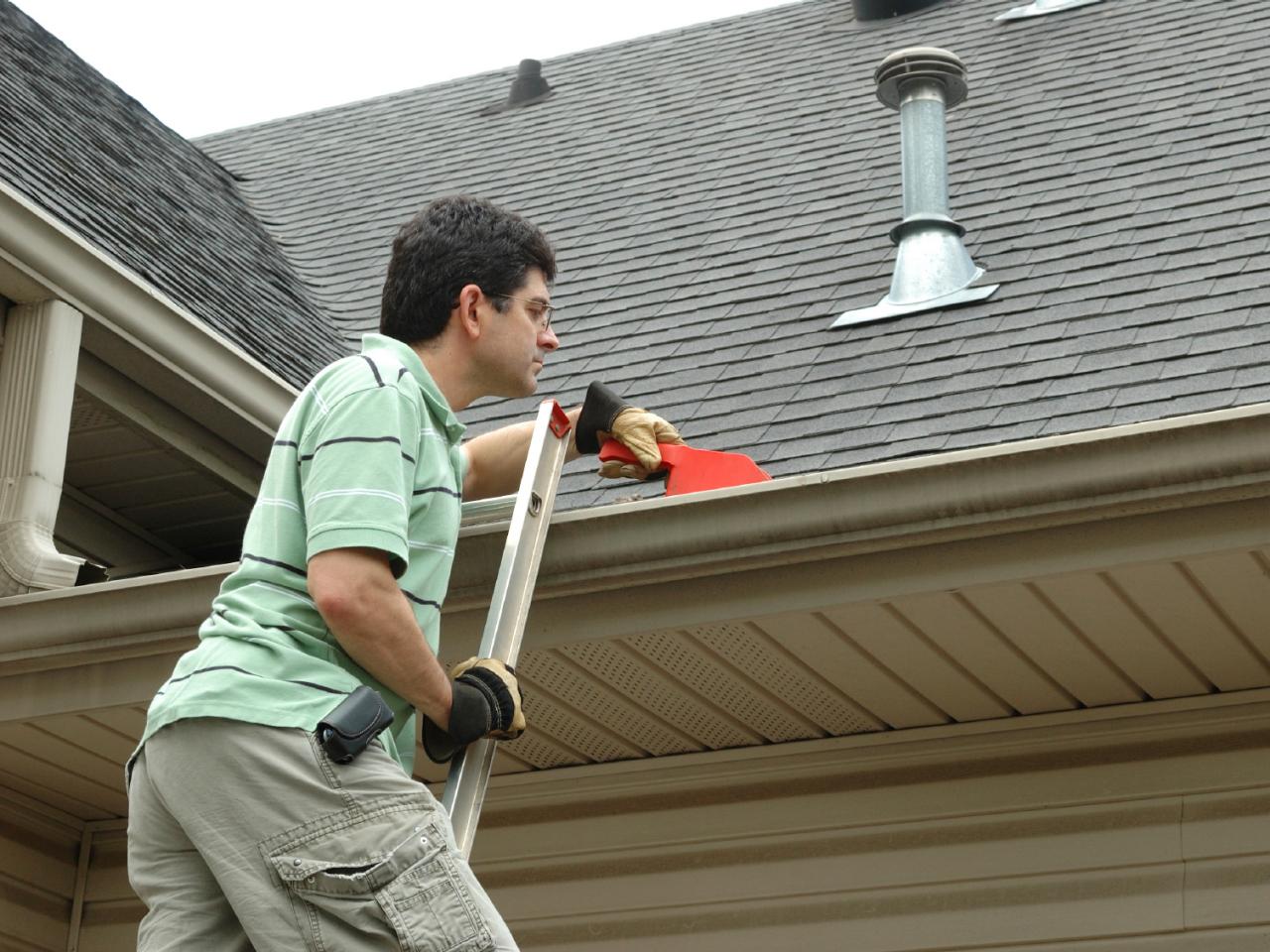
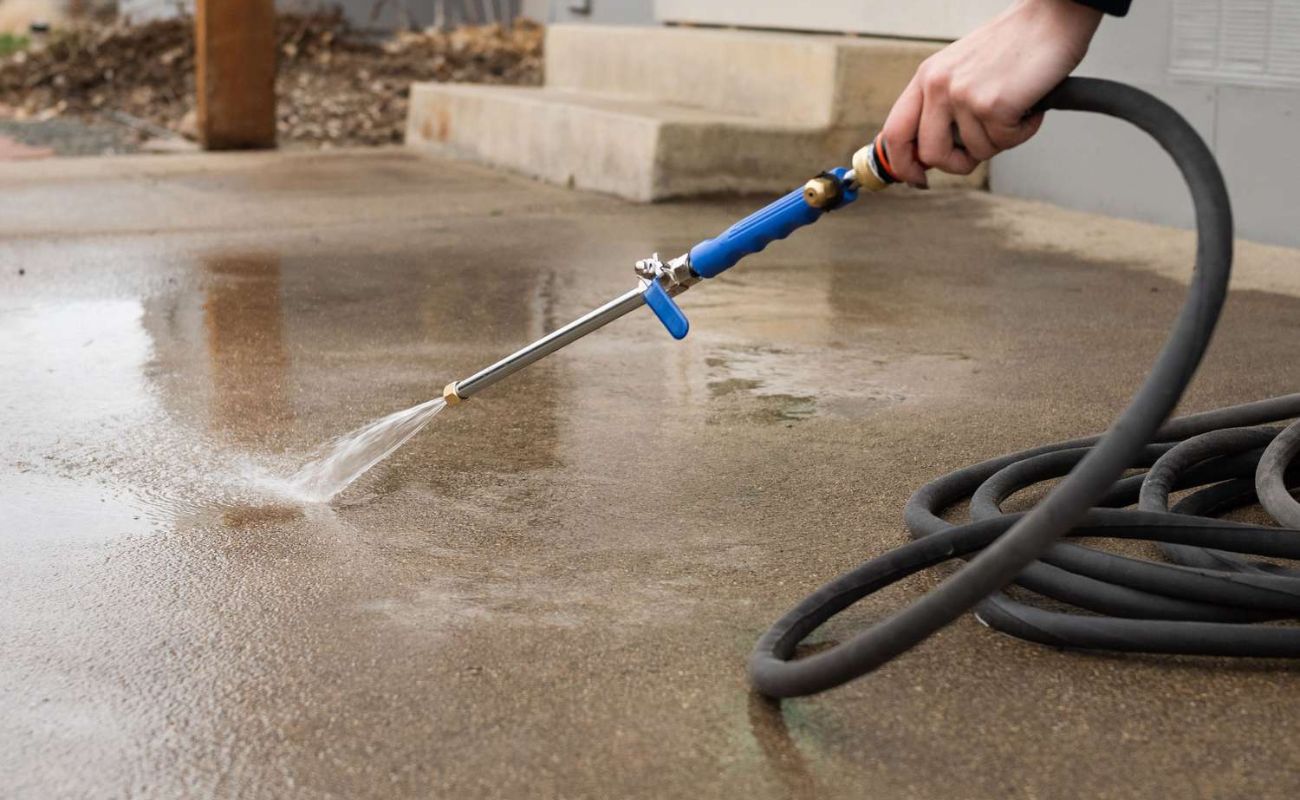
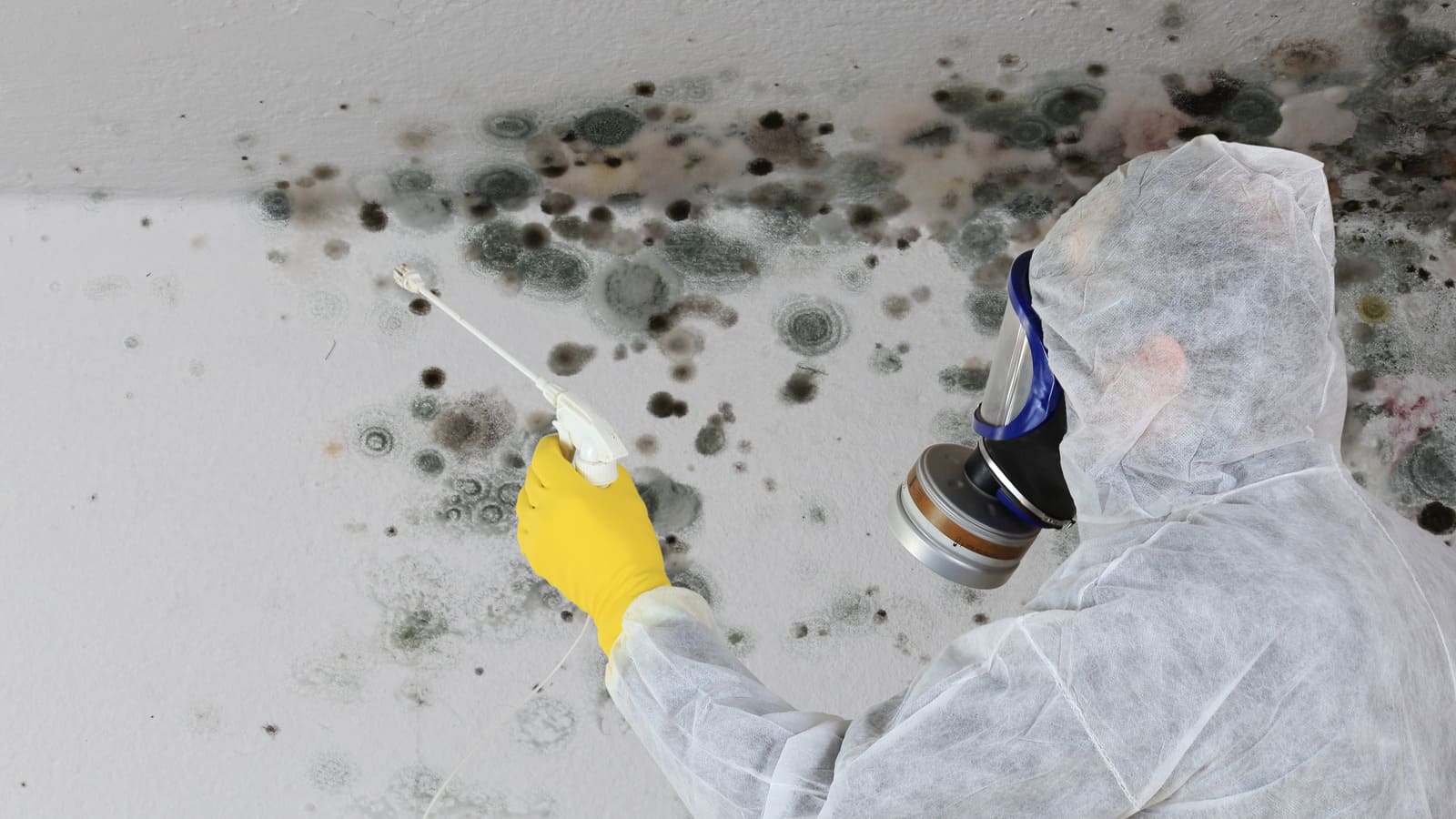

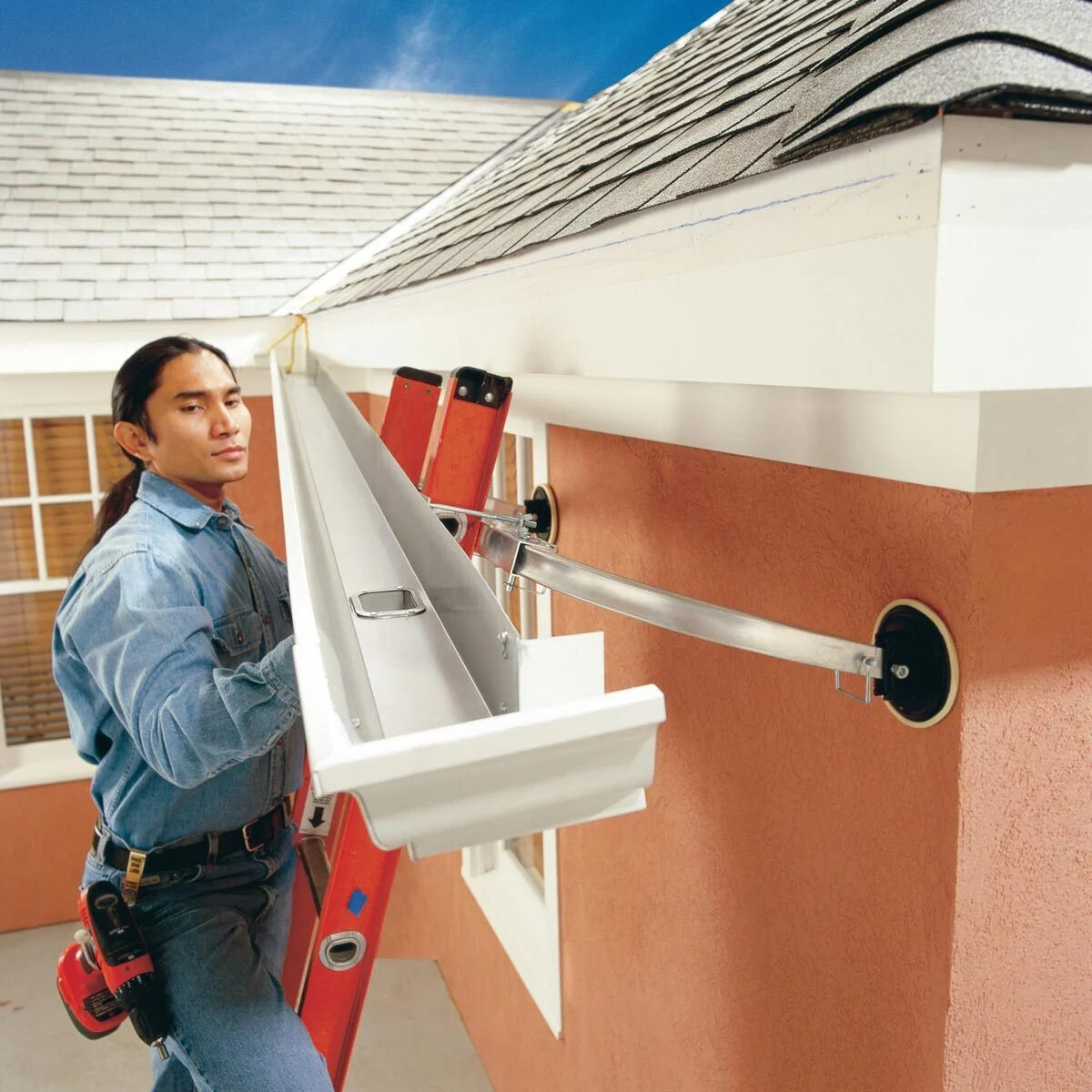
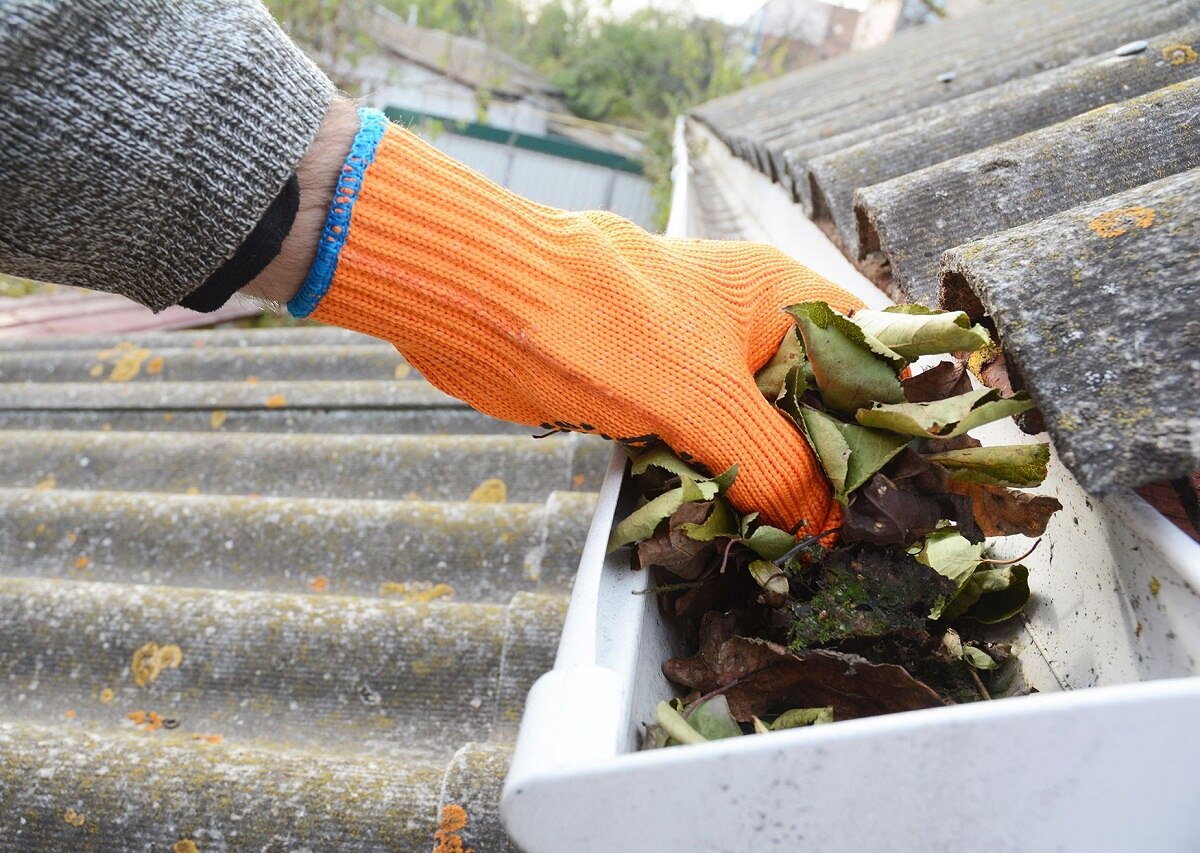
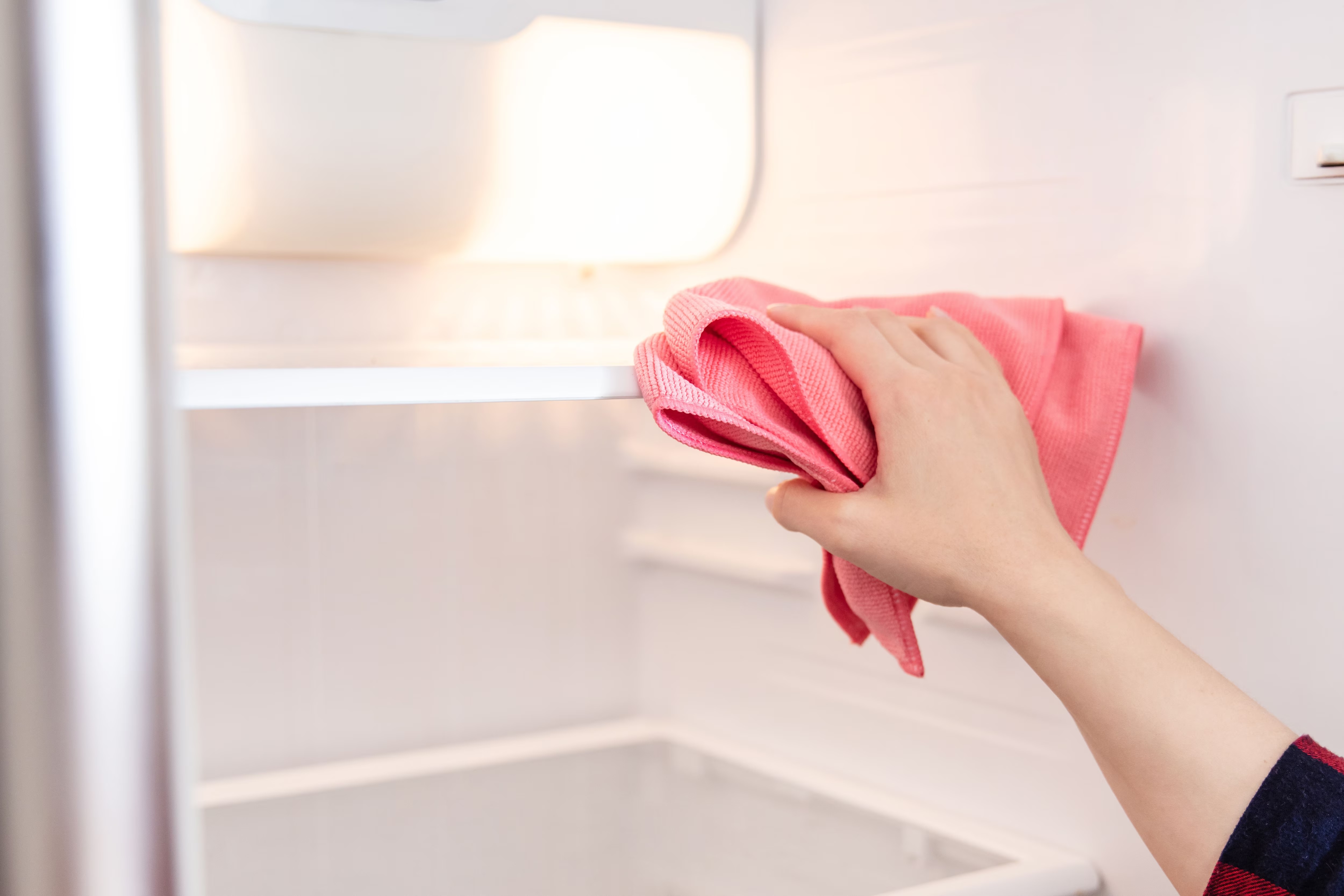

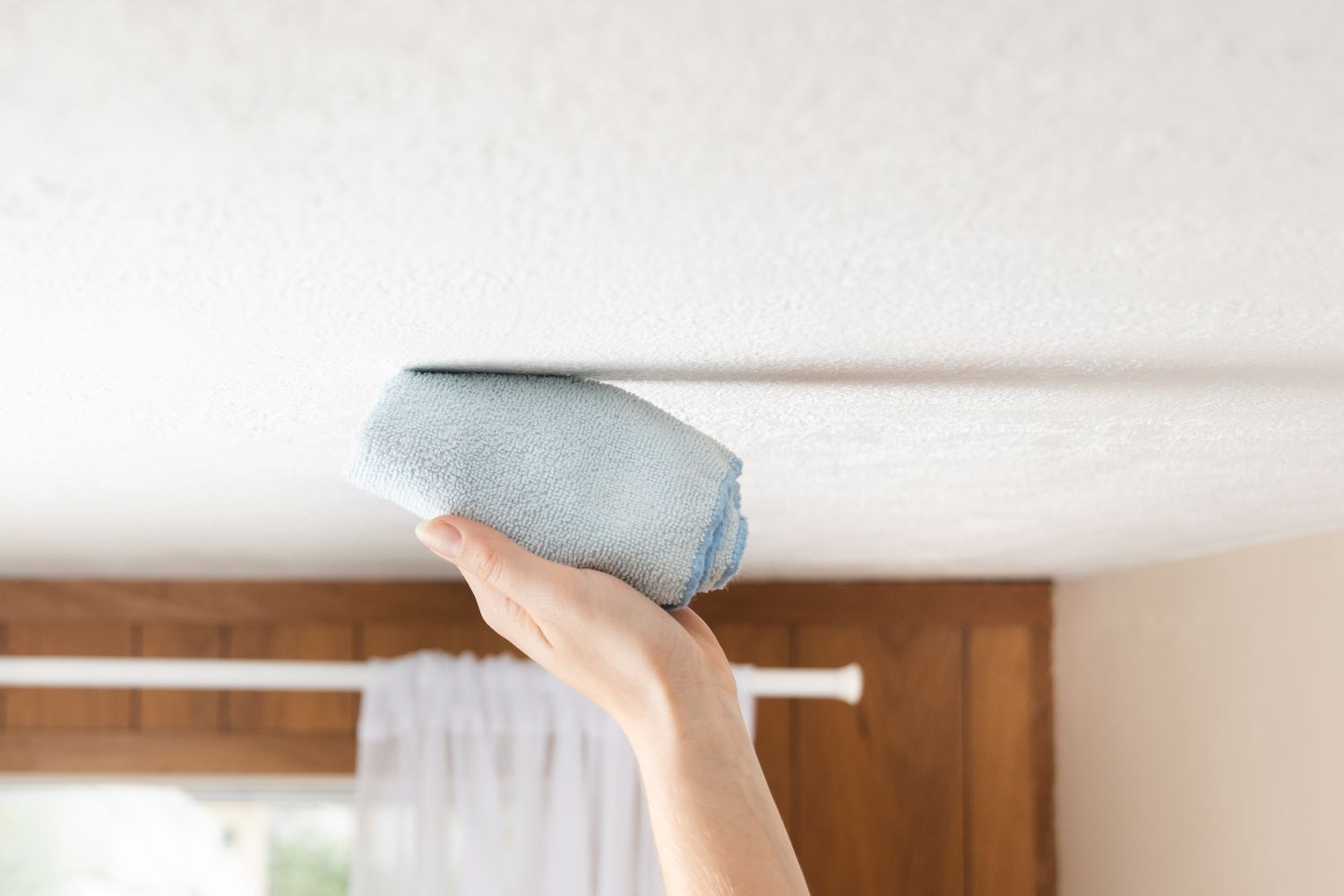
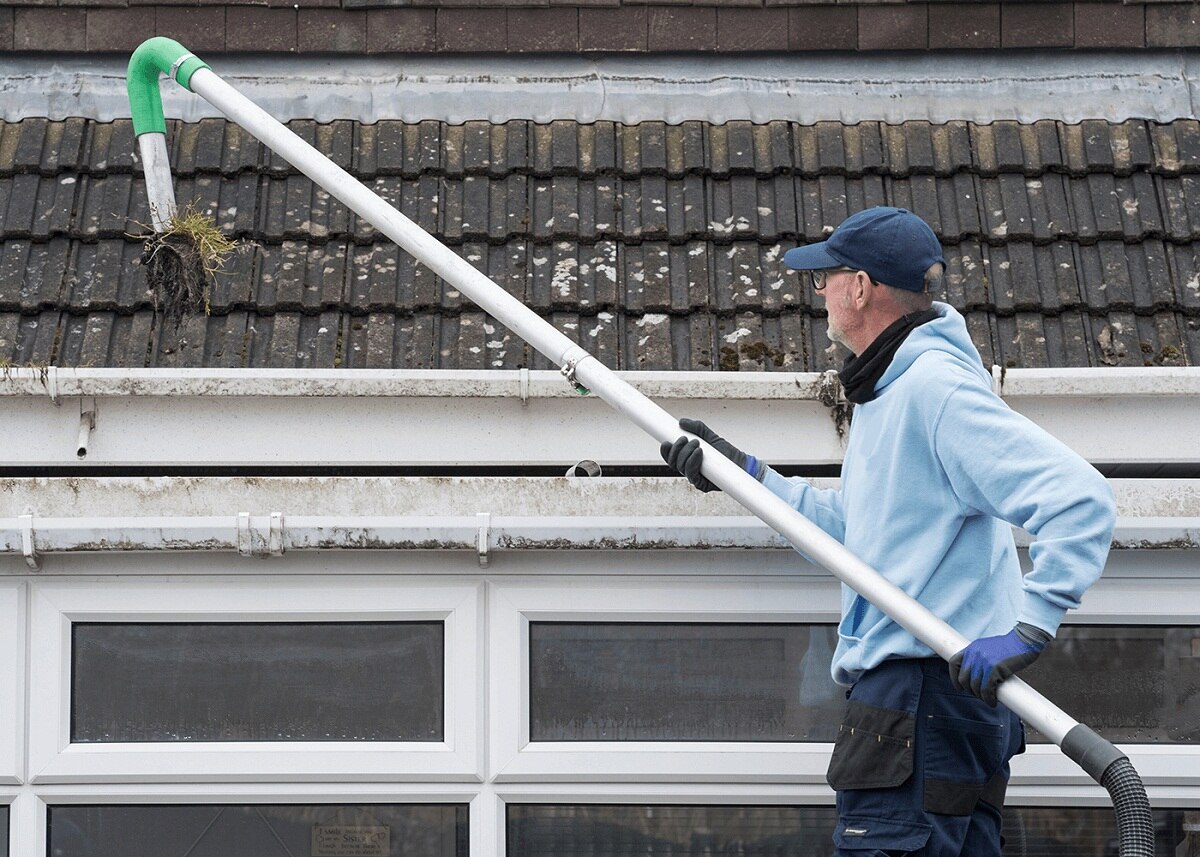
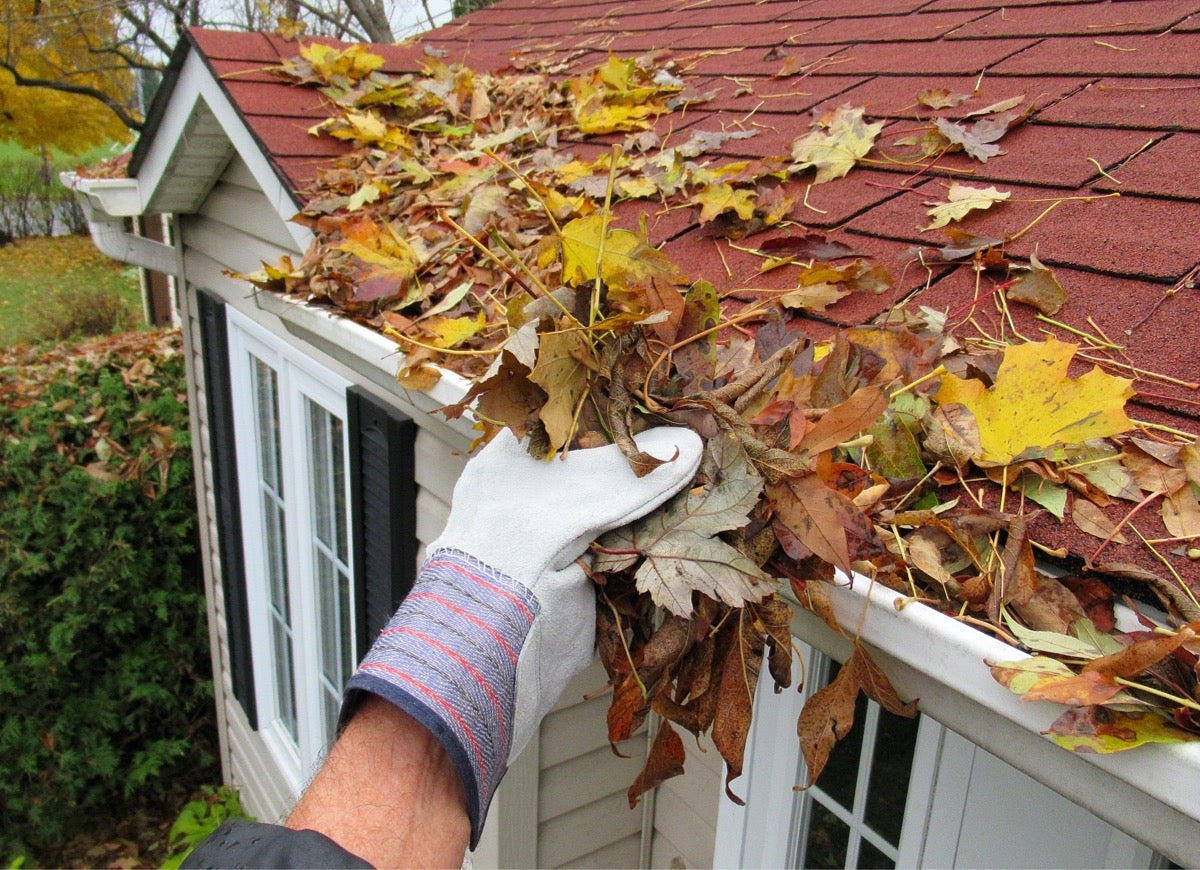
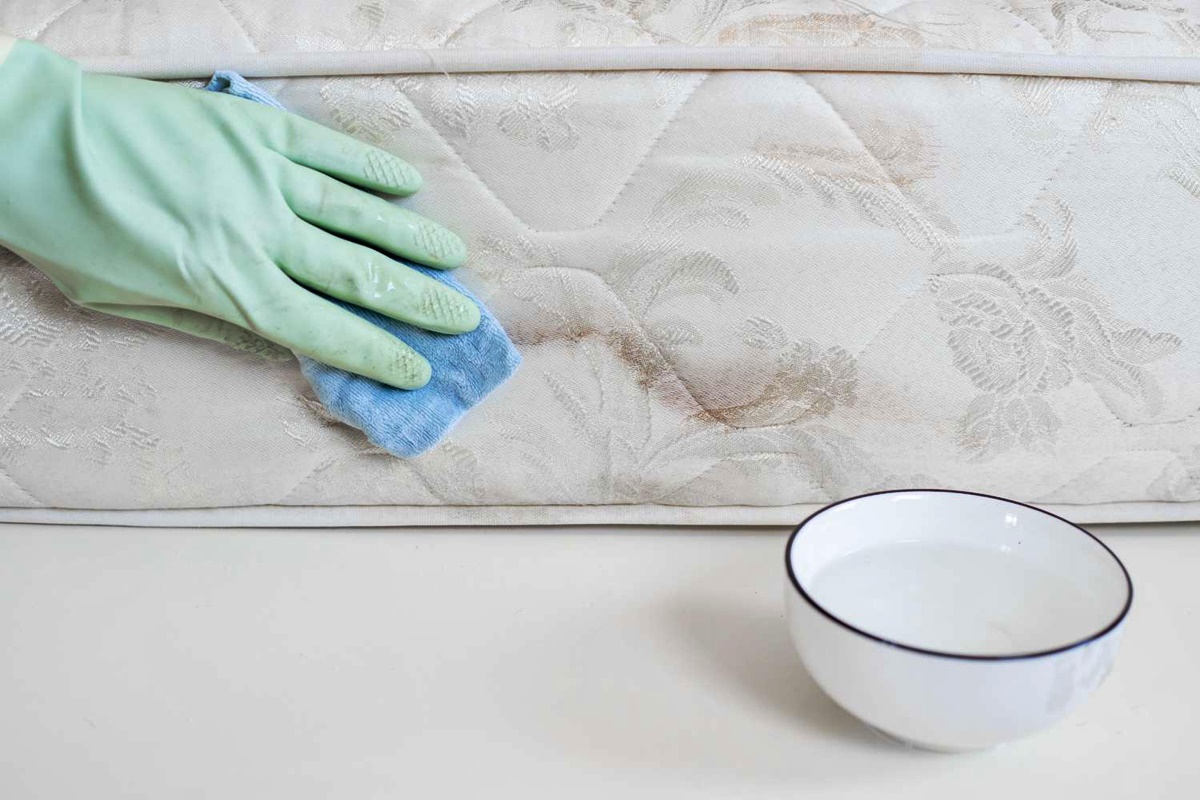
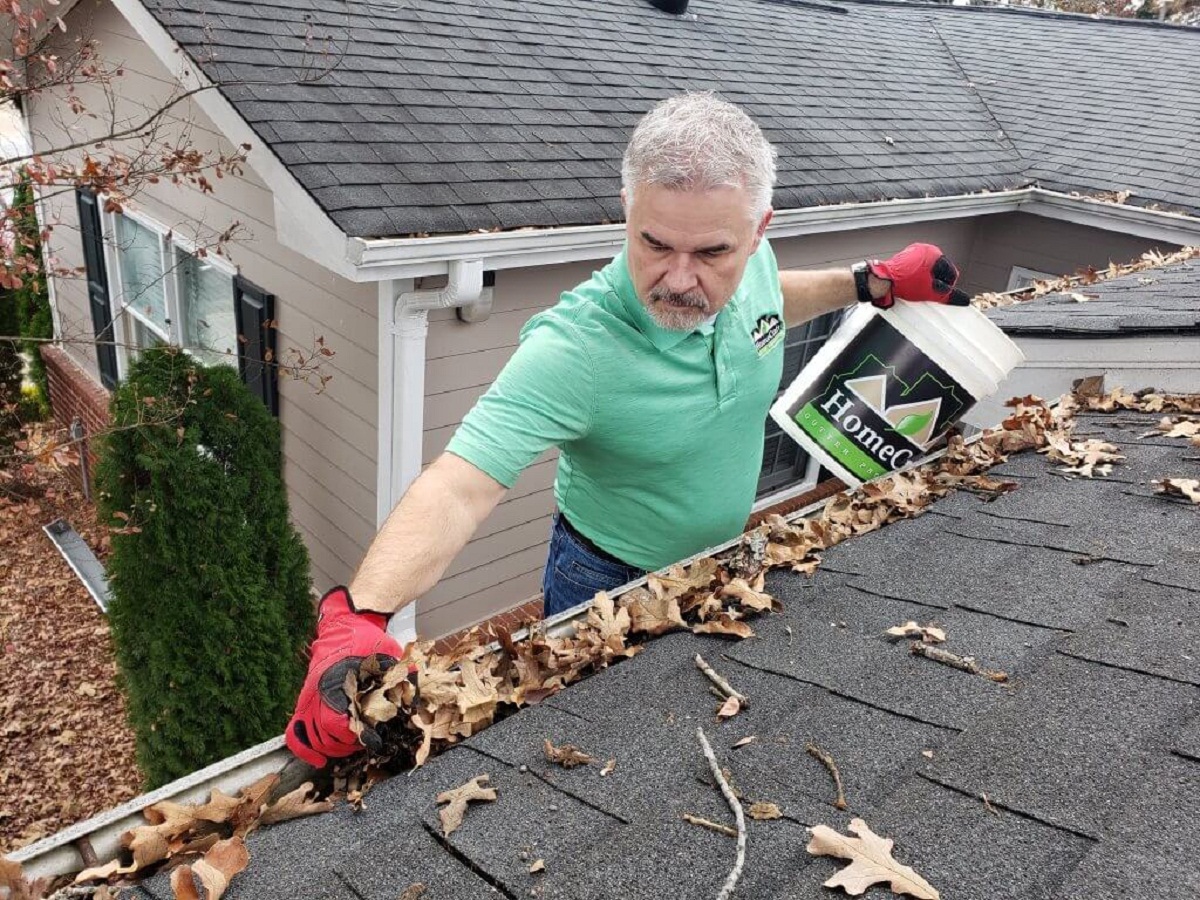

0 thoughts on “How To Clean Mold Off Gutters”